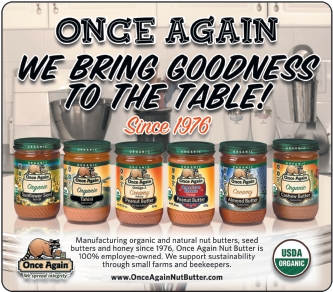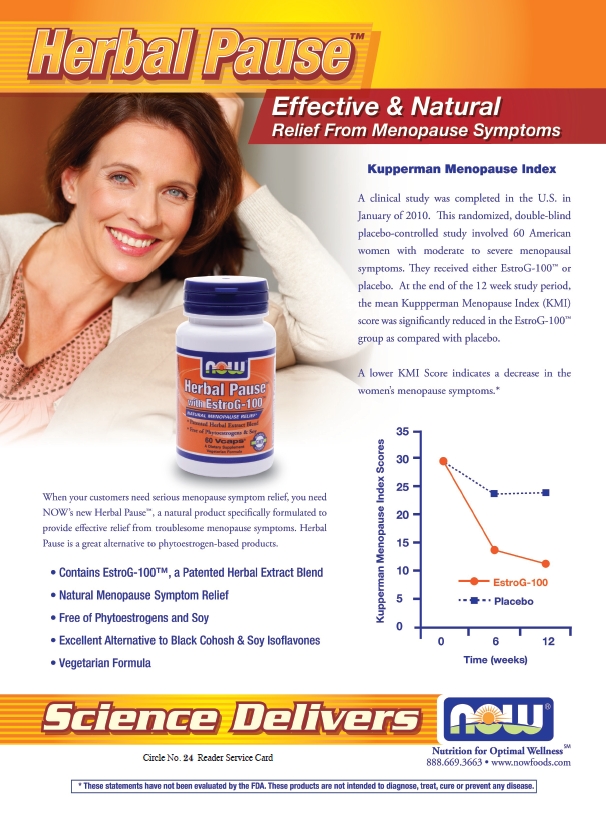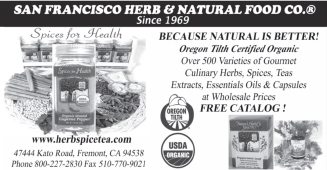Of the two words making up the term “functional food,” the operative one in a commercial sense is most definitely the latter. Consumers will not buy a product, even one with great health claims, that does not meet their basic criteria for a satisfactory food experience: convenience, familiarity and taste. But the market for fortified and wholesome food is surging because people now want to have their cake and have it be healthy, too, so to speak.
“Consumers are looking for more ways to create a healthy household, and are seeking out foods that provide health benefits beyond basic nutrition and still taste good,” says Mike Bush, vice president of business development for Ganeden Biotech, Inc., Mayfield Heights, OH. We will find out which health issues are driving sales in functional foods, and which items are making the biggest push in the marketplace. Experts also examine the reasons why taste will ultimately rule the day over health benefits, and will ponder which types of functional foods have staying power.
Movers and Shakers
The idea has always been a simple one, and only in recent years has science and consumer demand caught up with the concept of fortifying foods with nutritional benefits beyond what they naturally possess. Of course, many so-called “superfoods” can provide a health boost when eaten in their natural state. Whatever the individual case may be, an increasing number of food products are being developed and marketed based upon the health benefits they can provide.
Different consumers have different health needs, making some functional foods most appealing to a specific segment of the population, however large that segment may be. Other functional foods ride the wave of popularity that certain nutritional categories, like probiotics, have enjoyed recently among the general consumer pool.
Diabetes support is one of the niche segments just described, though unfortunately it’s a niche that’s grown to epidemic proportions. “While the issue of diabetes leads to the use of pharmaceutical products, dealing with caloric input and maintaining a healthy weight is something that functional foods can deal with effectively,” says Hank McInerney, CEO of Tower Brands, LLC, Centerbrook, CT, adding that eating smarter is a major part of the answer for many diabetics.
 Tying in with the diabetes trend in functional foods is the general move toward reducing the amount of sugar in food products. Excessive sugar intake is a major culprit in the development of type-2 diabetes, and the sugar-substitute stevia is making strides in replacing the sugar burden in our diets, according to Angus Flood, executive vice president of SweetLeaf Stevia, Gilbert, AZ.
Tying in with the diabetes trend in functional foods is the general move toward reducing the amount of sugar in food products. Excessive sugar intake is a major culprit in the development of type-2 diabetes, and the sugar-substitute stevia is making strides in replacing the sugar burden in our diets, according to Angus Flood, executive vice president of SweetLeaf Stevia, Gilbert, AZ.
While historically, it has not been an easy trick to replace sugar with alternative sweeteners like stevia and achieve a similar final product, much progress has been made. Lazier efforts at sugar-substitution can mean underwhelming products, Flood explains, continuing, “Where we see people with more commitment to actually formulating properly from the ground up, there can be some excellent results.”
The reasons for making this push include stevia’s ability to reduce or replace sugar in many applications, and its potential benefits as a superfood in areas like metabolism, blood sugar control and brain health, according to Flood. Perhaps more important is the taste factor. “It can be a surprise for someone, and even for people in the industry, to taste a stevia leaf, and to say wow, this is just sweet!” Flood says. Political pressure and market factors like the price of sugar should continue to push stevia to the forefront, as food chemists learn to work its healthful qualities into products while reducing sugar levels at the same time.
Eating foods that satisfy and actually help control weight is a consumer dream that functional food makers want to help satisfy. “Consumers want efficacious and safe weight management beverages—and they also want instant results,” says Paul Dijkstra, CEO of InterHealth Nutraceuticals, Inc., Benicia, CA. Claims on product labels such as “reduces appetite” or “inhibits hunger” are a powerful draw these days, Dijkstra says, not only because of what they promise, but also because they are credible to consumers. Feeling satiated after meals is an important health concern for those that need to keep their weight under control, so we will continue to see functional foods that cater to that need.
Because brain and heart health are current areas of concern for millions of people, products with answers for both needs are flourishing. “Consumers are demanding products fortified with omega-3s EPA/DHA,” says Linwood Riddick, vice president of marketing for Ocean Nutrition Canada Ltd., Dartmouth, NS.
This is a demand driven by several factors, Riddick says, including media coverage of clinical studies on omega-3s and the resulting consumer awareness of their benefits. Omega-3s themselves are now mainstream nutritional necessities, so food products containing them, from orange juice to sliced meat, are becoming hot items. The omega-3 food category alone, says Riddick, is a multi-billion dollar category.
 One functional foods trend with a bright present and future is fortification with probiotics, known for their well-established digestive and immune health benefits. Yogurt is one of the original “fortified foods” because of its probiotic content, and kefir is a fermented milk drink that is making strides with consumers. “In fact, kefir is the fastest growing segment in the dairy category,” says Jennifer Bice, owner of Redwood Hill Farm and Creamery and Green Valley Organics, Sebastopol, CA.
One functional foods trend with a bright present and future is fortification with probiotics, known for their well-established digestive and immune health benefits. Yogurt is one of the original “fortified foods” because of its probiotic content, and kefir is a fermented milk drink that is making strides with consumers. “In fact, kefir is the fastest growing segment in the dairy category,” says Jennifer Bice, owner of Redwood Hill Farm and Creamery and Green Valley Organics, Sebastopol, CA.
Bice says a dramatic sales increase has been seen for both yogurt and kefir recently. What still bars many people from enjoying the health benefits of these products is lactose intolerance. Bice says, however, that these individuals need not miss out on the functionality of cultured dairy products if they seek out lactose free options.
People are becoming more aware of the need for a well-functioning digestive tract, and this has been influencing their food choices. “Digestive health has been at or near the top of the list of consumer health concerns for several years now,” says Eric Reamer, associate industry manager, bioactives, for Danisco USA Inc., New  Century, KS. As a result, a great deal of research into available prebiotics and probiotics is ongoing, he says, and this research is in turn influencing product development. Reamer also cites bone health as a functional food category to watch for growth in the near future.
Century, KS. As a result, a great deal of research into available prebiotics and probiotics is ongoing, he says, and this research is in turn influencing product development. Reamer also cites bone health as a functional food category to watch for growth in the near future.
Further areas of interest include products fortified with or naturally containing phytosterols, and calcium plus vitamin D fortification, according to Peter Leighton, a partner in Natural Discoveries LLC and Abunda Functional Foods, Salt Lake City, UT. Vitamin D, especially, is working its way into every product that can accommodate it, due to the recently increased daily intake recommendation for this nutrient and the resulting consumer interest. Consumers typically require a period of familiarization, enabled by prolonged exposure, to incorporate a new health approach into their lives, Leighton says. He reminds us that the benefits of calcium were touted for many years before they became universally recognized and before we saw products formulated to include calcium.
Products infused with a natural, safe energy boost have increased appeal in the market today, where many more thoughtful consumers are wary of the extreme, jitters-inducing energy drinks that have flooded store shelves. “Younger generations will be attracted to products that help increase energy, as well as products that focus on appearance such as weight management or beautiful skin,” says Dijkstra, while adding that with baby-boomer consumers, products in the joint, bone and heart categories will continue to prosper.
One standout individual product to take note of is Kombucha. States Rahul Panchal, CEO of Prometheus Springs, LLC, New York, NY, “As far as hot items go, I'd say Kombucha seems to be the biggest hit,” a fact that, he says, is a perfect example of the schism between taste and health benefits, which we will break down next. Known more for its health properties than the way it tastes going down, Kombucha is an example of health benefits outweighing taste issues in the minds of some consumers.
 Nutritional yeast is also carving out a niche for itself, Panchal explains, stating, “This year I’ve seen more and more whole-food snacks using nutritional yeast in place of cheese,” in products like kale chips and vegan queso-dips. The deactivated yeast has long been popular with vegans as a cheese substitute, and is often used as a topping for popcorn. It contains chromium in a form beneficial to diabetics, in that it helps improve glucose tolerance (1). Finally, Panchal heralds the rise of the herb capsaicin in functional foods. Research into its healthful properties has been motivating the inclusion of capsaicin in food products, including beverages, according to Panchal.
Nutritional yeast is also carving out a niche for itself, Panchal explains, stating, “This year I’ve seen more and more whole-food snacks using nutritional yeast in place of cheese,” in products like kale chips and vegan queso-dips. The deactivated yeast has long been popular with vegans as a cheese substitute, and is often used as a topping for popcorn. It contains chromium in a form beneficial to diabetics, in that it helps improve glucose tolerance (1). Finally, Panchal heralds the rise of the herb capsaicin in functional foods. Research into its healthful properties has been motivating the inclusion of capsaicin in food products, including beverages, according to Panchal.
Taste Rules
The functional foods market can be divided into three basic categories, according Leighton: inherently healthy foods that naturally contain bioactive components with proven health benefit(s), foods that are fortified with one or more functional bioactive, and those functional foods that are engineered to deliver a particular health benefit through bioactive ingredients.
Products promising a targeted benefit are not always bound to be leaders in the category. “While there are natural compounds with data validating a strong therapeutic benefit, which can be formulated into food form, it is not a wise marketing approach,” Leighton says. He adds that these same compounds can make great ingredients in products promising general wellness or addressing less acute needs.
Indeed, Andy Jacobson, co-founder of I AM enlightened nutrition, Newton, PA, says that when it comes to health claims, “Simple messaging and familiar ingredients should never be underestimated.” He emphasizes that repeat purchases among most consumers of functional foods are driven by taste and convenience. “The mainstream consumer is also less inclined to research the benefits of a functional additive, so they need to be already aware of the benefits,” he says.
Taste, above all, is in the driver seat of functional food success. “Medicine can taste bad; foods have to taste good as well as provide health benefits,” says McInerney, adding that many beverage products, like the ones his company sells, are designed to be used with large amounts of water, and so they need to have a palatable, preferably pleasing taste to them. “You can get away with marginal taste if the consumer is only consuming a couple of ounces at a time,” he says.
Leighton sees it as a tradeoff in which consumers aren’t willing to budge more than a couple of inches. Factors like taste, convenience, price point and health benefits are the primary ones consumers weigh, and they are not weighed equally. “In fact, some of the biggest functional food failures are a result of foods that did not deliver on the primary role we’ve come to expect of food: taste,” Leighton says.
The difficulty met with in terms of taste is a matter of the specific product being dealt with. “Some ingredients, such as probiotics and soluble fibers, can be formulated into an existing product with little impact on taste or other characteristics,” says Reamer. Where there is a noticeable impact on taste, flavor maskers or changes in the manufacturing process may be required, he explains.
All tastes being equal, the future of functional foods is squarely in the value-added side of things. Bush states, “Naturally healthy foods and superfoods have become more and more popular because of the scientific validation of their health benefits, but for the majority of consumers trying to live a healthy lifestyle, fortified foods and beverages have quickly become a way of life.” WF
Reference
1. A. W. Saul, “20 ways to make nutritional progress against diabetes,”doctoryourself.com, 2003, http://www.doctoryourself.com/diabetes.html, accessed April 25, 2011.
Published in WholeFoods Magazine, June 2011










